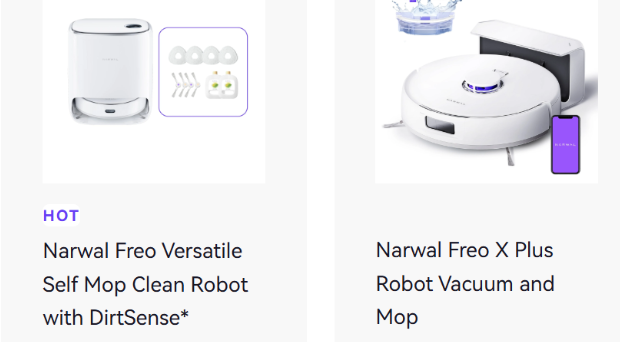
The Benefits of Low-Noise Robot Vacuums for Noise-Sensitive Homes
Do you find the noise of your vacuum cleaner disturbing? Imagine a world where your robot vacuum quietly goes about its job, letting you enjoy peace and quiet at home. The benefits of a quiet robot vacuum cleaner extend beyond just the absence of noise.
What Determines a Quiet Robot Vacuum?
To determine if a robotic vacuum is quiet, you should consider some key features. These features help reduce noise while still providing good cleaning performance.
Advanced Motor Technology
Advanced motor technology is essential for a quiet robotic vacuum. Modern designs often use brushless motors. These motors are quieter and more efficient than traditional brushed motors. Brushless motors reduce friction, which results in less noise and a longer motor life.
Some vacuums use variable speed motors. These motors adjust their power based on the surface they are cleaning. This reduces noise during less demanding tasks. For example, lower power settings on hard floors produce less noise compared to high power settings on carpets.
Sound Insulation
Sound insulation is another critical feature that determines the quietness of a robotic vacuum. Sound insulation is achieved by using materials that absorb and reduce noise from the motor and other moving parts. High-quality insulation such as acoustic foam, rubber gaskets, and soundproof casings help contain and reduce operational noise.
Low-Decibel Operation
Decibel ratings measure the loudness of sounds. Lower ratings indicate quieter operation. For a robotic vacuum, a low-decibel rating is crucial to ensure it operates without disturbing the household.
Most quiet robot vacuums have decibel ratings around 60 dB or lower. This is comparable to the sound of a normal conversation. When selecting a robotic vacuum, look for those that highlight their low-decibel performance. Some models even offer “silent mode” settings, further reducing noise during operation to maintain a peaceful home environment.
How to Choose the Quietest Robot Vacuum
When looking for the quietest robotic vacuum, it’s essential to consider several key factors. These include your home environment, decibel ratings, and user reviews and testimonials.
Consider Your Home Environment
Factors such as the layout of your home, the types of flooring you have, and the presence of pets can influence your choice.
- Home Layout: If your home has tight corners and a lot of furniture, a robotic vacuum with advanced navigation and mapping capabilities will be helpful. This ensures that the vacuum can navigate efficiently and quietly.
- Flooring Types: The noise level of a robotic vacuum might vary depending on the type of flooring. Hard floors, for example, may amplify the noise more than carpets. Models with adjustable suction settings can help reduce noise on hard floors.
- Presence of Pets: Homes with pets may require a robotic vacuum with powerful suction to handle pet hair. While these models might be noisier, choosing one with a noise reduction design can help maintain a peaceful environment.
Consider Decibel Ratings
Understanding decibel ratings is crucial when selecting a quiet robotic vacuum. The decibel (dB) rating indicates how loud a vacuum will be during operation.
- Ideal Decibel Range: Look for robotic vacuums with decibel ratings between 55-65 dB. This range is generally considered quiet enough for home use without causing significant disturbance.
- Comparing Models: Check the specifications of different models to compare their decibel ratings.
Refer to User Reviews and Testimonials
User reviews and testimonials provide valuable insights into the real-world performance of robotic vacuums, particularly regarding noise levels.
- Importance of Reading User Feedback on Noise Levels: User feedback can highlight any noise issues not mentioned in the product specifications. Pay attention to reviews that specifically mention the vacuum’s noise during operation.
- Where to Find Reliable Reviews and Testimonials: Look for reviews on trusted retail websites, as well as technology review sites and forums. Checking multiple sources can give you a comprehensive view of the vacuum’s performance.
Other Factors
Beyond the highlighted factors, there are other aspects that contribute to the overall quietness of a robotic vacuum. The quality of materials used in construction, the precision of sensors, and the implementation of smart algorithms that optimize cleaning routes for minimal noise disturbance are also important.
As we embrace the era of smart living, choosing a robotic vacuum that complements our lifestyle is paramount. The quiet operation of these models ensures a harmonious coexistence with your household activities, making cleaning an unobtrusive and efficient task.
What To Do If Robotic Vacuum is Making Too Much Noise
Dealing with vacuum and mop robots that emits loud noise can be both disruptive and bothersome. Fortunately, there are several strategies you can employ to mitigate the noise and restore a quieter cleaning experience.
- Check for Maintenance Issues: Before taking any additional steps, ensure that your vacuum cleaner is properly maintained. Clean or replace filters, clear any debris from the brushes, and inspect the overall condition of the vacuum. Ensure there are no obstacles hindering the movement of the vacuum. A well-maintained machine is more likely to operate quietly.
- Explore Quiet Modes: Many modern vacuums come equipped with different operating modes. Explore the settings and activate a quiet mode, if available. These modes are intended to reduce noise levels.
- Consult the User Manual: Refer to the user manual provided by the manufacturer. It often contains troubleshooting tips and guidance on reducing noise. Follow the recommendations for noise issues. If the noise problem persists despite your efforts, it may be prudent to seek professional assistance.
Investing in a quiet robotic vacuum is about more than just reducing noise; it’s about enhancing your quality of life.
Balancing Quietness and Cleanliness
When searching for the quietest robot vacuum, consider not just the decibel (dB) rating, but also how well it cleans. Some models have made significant strides in offering a quiet cleaning experience.
The efficient navigation of a vacuum can also assist with its ability to clean. Models with advanced navigation and obstacle detection technology can move seamlessly throughout your home. Advanced features such as this can avoid unnecessary collisions and reduce abrupt movements that might contribute to noise. This ensures a smoother and quieter cleaning process.
Conclusion
In conclusion, finding a quiet robot vacuum doesn’t have to be a daunting task. By focusing on key features like advanced motor technology, sound insulation, and low-decibel operation, you can enjoy a peaceful home while keeping it clean. Don’t let noisy vacuums disrupt your tranquility. Investing in a quiet robot vacuum allows you to take control of your cleaning routine and enjoy a serene home environment.
FAQ
Are all robot vacuums loud?
No, not every robot vacuum is loud. Modern models are designed with advanced technologies to minimize noise. Features like brushless motors, sound insulation, and low-decibel operation allow these vacuums to operate quietly while still cleaning effectively.
How to Reduce Vacuum Noise?
To reduce the noise of your vacuum, ensure it’s well-maintained by regularly cleaning the dustbin, filters, and brushes. Choose a vacuum with adjustable suction settings to lower the power when high suction isn’t needed. Investing in a model with superior sound insulation can also reduce operational noise.
Many advanced robot vacuums also have a dedicated quiet mode. This feature will prioritize a silent operation reducing the motor’s intensity, making it ideal for cleaning during quiet hours or when you desire a peaceful atmosphere.
What other types of messes can the vacuum clean? Perhaps incorporating the vacuum into your mopping routine can help to keep your house clean. You can also find more information concerning your vacuum mopping and its care.


